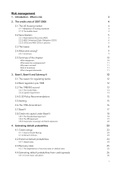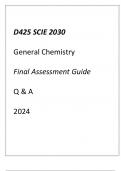Resume
Extensive summary of the book for Risk Management
- Cours
- Risk Management
- Établissement
- Vrije Universiteit Brussel (VUB)
This is an extensive summary of the book chapters that have to be know for the course Risk Management in . The chapters covered are chapters 6, 15 and 19. The section on univariate modelling and multivariate modelling is not covered by this book and thus not included. The chapter on Basel is prob...
[Montrer plus]





